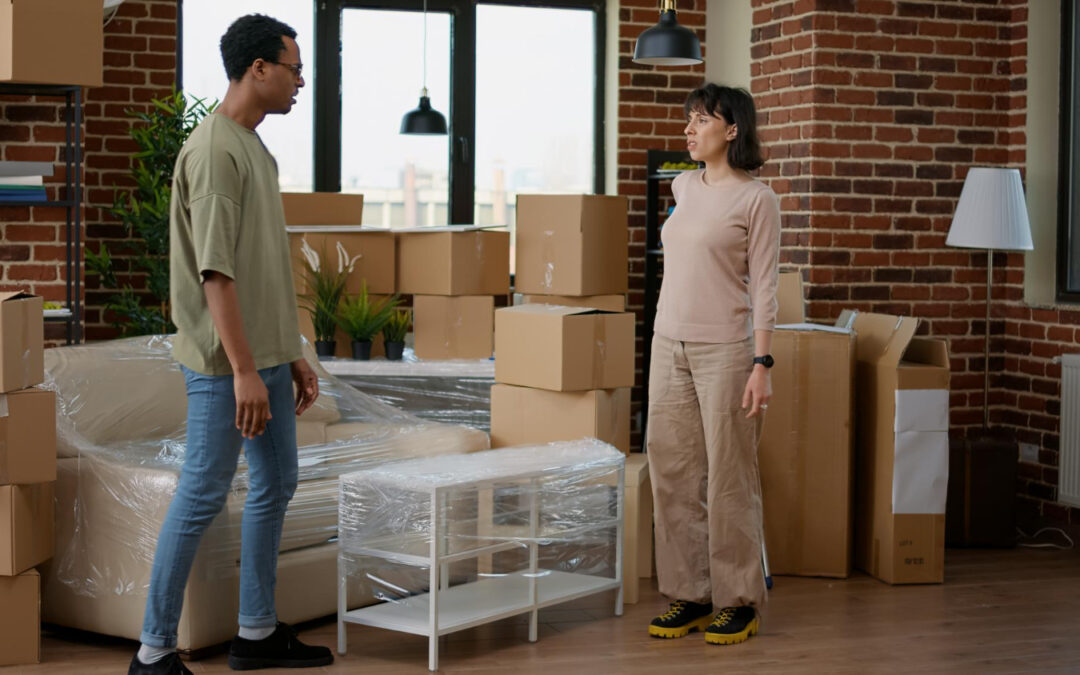Moving to a new home can be an exciting adventure, but the process of packing up your entire life can seem overwhelming. Knowing where to start and having a clear plan can ease the stress and make the task manageable. From creating a moving plan to knowing which packing supplies you need, a well-organized approach will save you time and effort.
Packing your home involves more than just throwing items into boxes. You need to consider how to protect your belongings, categorize your items, and ensure everything is ready for the move. Essential packing supplies like sturdy boxes, packing tape, and cushioning material are key to keeping your possessions safe. A systematic room-by-room packing strategy can help streamline the process, making sure nothing important gets left behind.
An organized move means less stress and fewer last-minute headaches. Knowing some tips and tricks for keeping your move on track can make the whole experience smoother and more enjoyable. By following these practical guidelines, you can turn a potentially chaotic move into a well-coordinated event. You’ll be unpacked and settled into your new home in no time.
Creating a Moving Plan: Steps to Get Started
The first step to a successful move is creating a detailed plan. Start by making a checklist of all the tasks that need to be completed before, during, and after the move. This list will act as your roadmap, helping you stay organized and ensuring nothing is overlooked. Include tasks like choosing a moving date, notifying utility companies, and setting up mail forwarding.
Next, sort through your belongings and decide what to keep, donate, or throw away. This is a great time to declutter and get rid of items you no longer need. Junk removal can make the packing process easier by reducing the number of items you need to pack. Set aside items for donations and schedule a pickup if necessary.
Finally, create a timeline for your move. Allocate specific days for each major task, like packing different rooms or taking apart furniture. Stick to your timeline to avoid last-minute rushes and stress. Having a clear plan will make the whole moving process smoother and less overwhelming.
Essential Packing Supplies You Will Need
Before you begin packing, gather all the essential supplies you’ll need. The right tools can make packing easier and protect your belongings during the move. Start with sturdy, high-quality moving boxes in various sizes. Small boxes are great for heavy items like books, while larger ones are perfect for lighter, bulkier objects like pillows and bedding.
Packing tape is another must-have. Choose a strong, durable tape to secure your boxes and prevent them from falling apart during transit. Don’t forget a tape dispenser to make the process faster and more efficient. Bubble wrap and packing paper are essential for wrapping fragile items like dishes, glassware, and electronics. They provide cushioning to prevent breakage.
Label makers or permanent markers are also crucial. Clearly label each box with its contents and the room it belongs in to make unpacking easier. Lastly, pick up some moving blankets or furniture pads to protect larger items like sofas and tables from scratches and dents. Having all these supplies on hand will prepare you for an efficient and safe packing process.
Room-by-Room Packing Guide
Packing room by room is an effective strategy that keeps things organized and less overwhelming. Start with rooms you use the least. For example, begin with the guest room or the storage area. This way, you can pack items you won’t need immediately while keeping your daily life uninterrupted.
In each room, start by packing items that are least used. Label each box with its contents and the room it belongs to. This will help when you unpack and make setting up your new home easier. For instance, in the kitchen, pack rarely used appliances and dishes first and save daily essentials for last. Wrap fragile items carefully and use bubble wrap or packing paper to avoid breakage.
When packing bedrooms, start with out-of-season clothing and items stored under beds or in closets. Use wardrobe boxes for hanging clothes to keep them wrinkle-free. In the living room, pack books, décor, and electronics carefully. Use moving blankets to cover furniture and protect it during the move. By staying organized and methodical, you’ll ensure that nothing gets lost or damaged.
Tips for Keeping Your Move Organized and Stress-Free
Staying organized is key to a smooth move. Begin by setting up a designated moving station in your home. This could be a table or an area where you keep all your packing supplies like boxes, tape, markers, and wrapping materials. Having everything in one spot saves time and makes the packing process more efficient.
Create a moving binder or folder to keep all important documents, lists, and receipts related to your move. This way, you have everything you need in one place, making it easy to access when necessary. Include your moving plan, timeline, and any contracts or agreements with moving companies in this binder.
Take breaks and ask for help if you need it. Packing an entire home is a big job, and it’s okay to reach out to friends or family for assistance. Hiring professional packers can also take a lot of the stress off your shoulders. Keeping a positive mindset and staying organized will make your move much easier.
Conclusion
Packing your home for a move doesn’t have to be daunting. With proper planning, the right supplies, and a systematic approach, you can make the process smoother and more manageable. From creating a moving plan to staying organized, every step you take can help reduce stress and make your move successful.
If you’re preparing for a move, let ASR Moving help you take the next steps. Our experienced team offers professional packing services and same-day furniture delivery to make your move as easy as possible. Contact ASR Moving today to learn how we can assist with your residential move and make your transition seamless.

